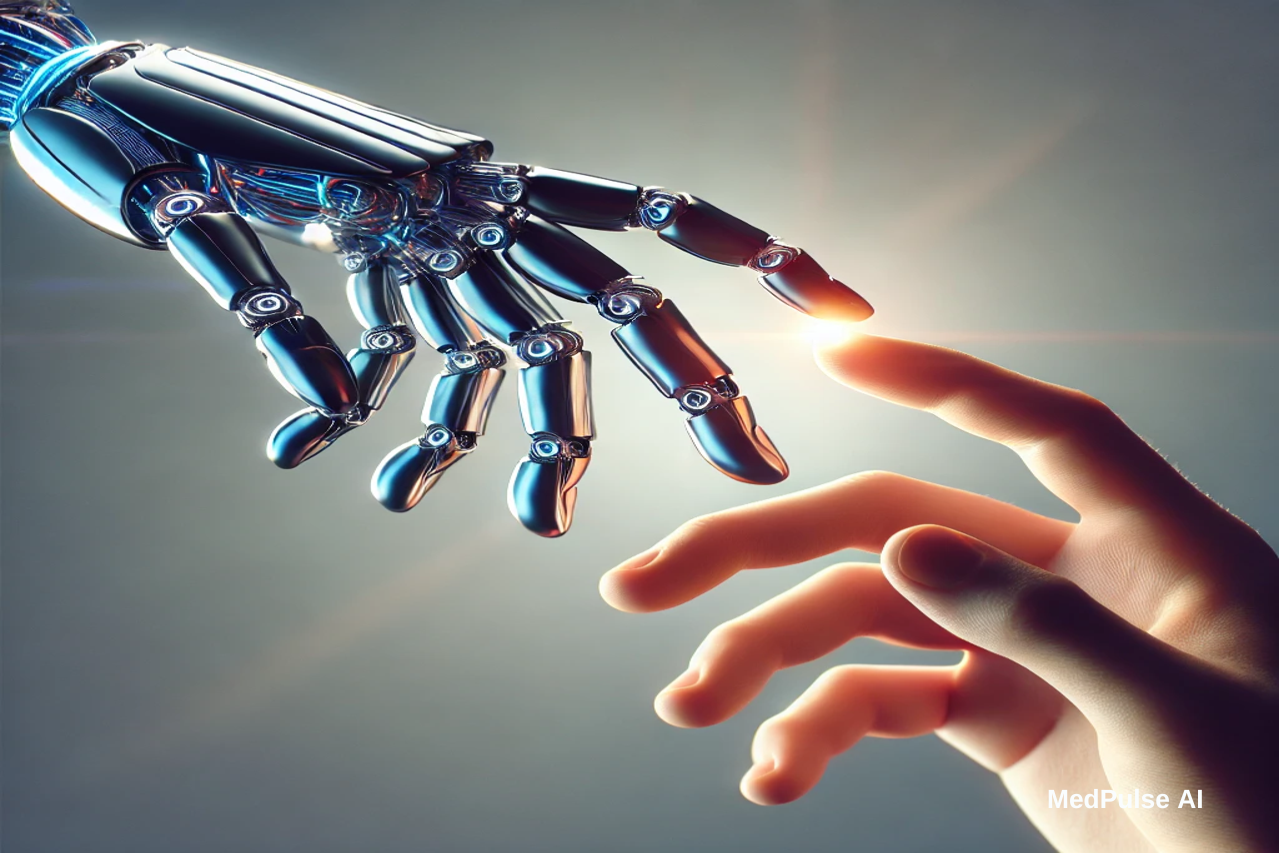The concept of “normal” in human behavior has always been fluid, shaped by cultural, social, and psychological contexts. However, the rapid rise of artificial intelligence (AI) is accelerating this evolution, offering tools to analyze and predict human behavior with unprecedented precision. AI is not just a mirror reflecting humanity; it’s an active force reshaping societal norms, redefining psychological frameworks, and challenging long-held definitions of intelligence, creativity, and empathy.
These shifts carry profound implications for mental health, decision-making, and ethics, forcing us to reconsider traditional benchmarks while grappling with complex questions about agency, privacy, and societal values.
Transforming Mental Health Insights with AI
AI’s ability to process vast amounts of human behavioral data is revolutionizing how we understand mental health and behavior. Traditional psychological frameworks, built on small-scale, localized studies, are being redefined by AI’s capacity to analyze global datasets. This allows for a deeper understanding of what constitutes typical or anomalous behavior.
- Predicting Crises: AI-powered systems analyze communication patterns, social media activity, or wearable data to detect signs of mental health crises, such as depressive episodes or suicidal ideation. For example, studies have shown that AI algorithms can identify linguistic markers of depression in social media posts with over 80% accuracy, enabling earlier interventions.
- Granular Understanding of Neurodiversity: Traits associated with neurodiversity, such as autism or ADHD, are gaining new context through AI. Instead of rigid diagnostic labels, AI enables a more dynamic understanding of these conditions, linking them to environmental, genetic, and social factors. This shift could foster inclusivity by broadening our view of human variability.
Despite these advancements, ethical dilemmas abound. If AI classifies behaviors as “abnormal” based on biased data, it risks reinforcing societal inequities. Additionally, over-reliance on AI for behavioral analysis could erode the nuance needed to address individual differences and reduce autonomy in mental health care decisions. How do we balance early intervention with respecting privacy? Can AI avoid reinforcing biases present in the data it learns from?
AI and Predictive Behavior Modeling: A Double-Edged Sword
AI’s predictive capabilities allow it to forecast human behavior with remarkable precision. By integrating historical data, environmental influences, and real-time inputs, AI can model individual and population-level behaviors. This has transformative implications across industries:
- Healthcare: AI predicts patient adherence to treatment plans, enabling personalized interventions. For example, AI systems have been used to anticipate diabetes management needs with accuracy rates exceeding 90%.
- Public Policy: Governments use AI to forecast migration patterns, disease outbreaks, and resource allocation needs. This helps create proactive strategies but raises concerns about data privacy and potential misuse of predictions.
However, such precision also raises concerns about determinism. If predictive models heavily influence decisions, do individuals lose their agency? Furthermore, AI’s reliance on historical data often neglects the unpredictability of human creativity or irrationality, leading to overconfidence in its conclusions.
Redefining Intelligence, Creativity, and Empathy
AI is challenging traditional notions of intelligence, creativity, and emotional depth by mimicking and sometimes exceeding human capabilities. This transformation is prompting society to reevaluate definitions that were once considered exclusive to human experience. While AI’s advancements hold promise, they also raise complex philosophical, ethical, and societal questions.
Broadening Intelligence
The concept of intelligence has long been measured by metrics such as IQ tests, which emphasize logical reasoning, mathematical ability, and problem-solving within narrow parameters. AI, however, introduces a paradigm shift. Systems like AlphaGo and DeepMind’s AlphaZero have not only surpassed human performance in games like chess and Go but have also demonstrated strategic innovation beyond human intuition. These achievements highlight that intelligence may extend beyond traditional human faculties.
At the same time, humans excel in areas where AI is still developing, such as emotional intelligence, contextual reasoning, and adaptability to unstructured environments. For instance:
- Emotional Intelligence: Humans can intuitively interpret subtle social cues and cultural nuances that AI struggles to understand without extensive training on context-specific datasets.
- Contextual Reasoning: AI often relies on predefined parameters, making it less adept at improvising in novel situations or understanding broader implications of its actions.
As AI continues to evolve, intelligence might need to be redefined to include collaboration between human intuition and machine precision, reflecting a more holistic understanding of cognitive capabilities.
AI-Driven Creativity
AI tools like OpenAI’s DALL-E, ChatGPT, and AIVA are generating artworks, music compositions, and written content that rival human output. For example:
- DALL-E creates detailed visual artwork based on textual descriptions, enabling new possibilities for design and illustration.
- AIVA composes symphonies tailored to specific emotional tones, often used in film scoring or personalized soundtracks.
While these outputs are impressive, they rely on vast datasets of preexisting human works. AI creativity stems from pattern recognition, probabilistic modeling, and recombination of elements, rather than the spontaneous originality associated with human creativity. This raises important questions:
- Can creativity exist without subjective experiences or emotional intent?
- Is AI-generated work a derivative of human effort, or does it represent a new form of creativity?
The future of creativity may lie in collaboration. Artists and writers are increasingly using AI as a co-creator—augmenting their work rather than replacing it. For instance, architects might use AI to model sustainable building designs, or filmmakers might use AI to generate concept art and storyboarding ideas. This fusion could expand the boundaries of what is possible in creative fields.
Simulated Empathy
AI is also advancing in its ability to simulate empathy, a trait once considered uniquely human. Virtual therapists like Woebot, Replika, and Wysa use natural language processing (NLP) to engage users in empathetic conversations. These systems are designed to detect emotional tones and provide responses that make users feel understood. For instance:
- Woebot helps users manage anxiety and depression through cognitive-behavioral therapy (CBT) techniques, delivering personalized guidance based on user interactions.
- Replika builds long-term, emotionally responsive relationships with users by remembering past conversations and adapting its responses accordingly.
While these systems lack genuine emotional experience, their effectiveness raises fundamental questions about empathy:
- Functional vs. Genuine Empathy: If a virtual therapist can make someone feel heard and supported, does the absence of authentic emotional experience matter?
- Applications in Healthcare: Simulated empathy could alleviate the burden on mental health professionals by providing immediate, scalable support for those in need.
However, there are risks. Over-reliance on AI for emotional support might lead to diminished human-to-human connections. Additionally, the deployment of empathetic AI in contexts like customer service or marketing raises ethical concerns about manipulating emotions for profit.
Challenges and Considerations
As AI continues to blur the boundaries between human and machine capabilities, several challenges must be addressed:
- Bias in AI Systems: If AI creativity, intelligence, or empathy is trained on biased datasets, it risks perpetuating or even amplifying existing inequalities.
- Redefinition vs. Replacement: Society must decide whether to view AI as a complement to human abilities or as a replacement for them.
- Cultural Impact: Different societies may value AI capabilities differently. For instance, collectivist cultures might prioritize AI’s ability to enhance cooperation, while individualist cultures may focus on personalization.
AI’s role in reshaping these fundamental human traits will depend on how we integrate these technologies into our lives, balancing their potential with ethical safeguards to ensure they enhance, rather than diminish, the human experience.
Global Perspectives: AI’s Impact Across Cultures
AI adoption and its impact on societal norms vary significantly across cultures, shaped by values, policies, and technological priorities. Exploring these differences provides insight into how AI is redefining “normal” human behavior globally:
- Collectivist vs. Individualist Societies: In collectivist societies like China, AI often reinforces community-oriented behaviors. For instance, facial recognition technology is widely used for public safety and compliance with social norms. In contrast, individualist societies like the United States may emphasize privacy and personal choice, leading to debates about balancing AI-driven surveillance with individual freedoms. In collectivist frameworks, AI technologies often enhance cooperation, such as smart cities relying on unified systems to improve shared public resources. Meanwhile, in individualist cultures, personalization algorithms dominate, catering to specific user preferences rather than collective needs.
- Countries Leading AI Innovation:
- China: As a global leader in AI development, China’s integration of AI into daily life—from healthcare to smart cities—is transforming societal expectations. AI-powered education platforms tailored to regional dialects and learning styles showcase a culturally specific approach. Social credit systems, while controversial, incentivize behaviors aligned with collective goals.
- Sweden: Known for its ethical approach to technology, Sweden focuses on using AI for social good. Initiatives like “AI Sweden” aim to democratize AI, ensuring it benefits all citizens while prioritizing transparency and fairness. Sweden’s focus on privacy and equity exemplifies how cultural values shape technological priorities, emphasizing informed consent in healthcare AI and sustainability-focused algorithms.
- India: India’s burgeoning AI ecosystem highlights its emphasis on cost-effective innovation. Projects like “Aarogya Setu,” an AI-driven health tracking app, demonstrate how AI can address public health challenges in resource-constrained settings, balancing technological advancement with inclusivity and access for its diverse population.
- Cultural Nuances and Ethical Considerations: How AI is perceived and implemented often depends on societal values. In Scandinavia, discussions center on AI’s environmental impact and equitable access, while in countries like Japan, AI’s integration into eldercare reflects respect for aging populations. Contrastingly, in some developing nations, the focus remains on leveraging AI to bridge gaps in education and healthcare.
These global perspectives highlight how cultural values shape AI’s role in society, redefining what is considered “normal” behavior within different contexts. They also underscore the need for inclusive global conversations about the ethics and priorities of AI development.
Philosophical and Ethical Questions
The evolving boundaries between human and machine capacities prompt profound philosophical questions: What does it mean to be human in an era where machines replicate human traits? How should society balance the benefits of AI’s insights with the risks of homogenizing or pathologizing diversity?
AI influences the evolving concept of “normal” in human behavior, challenging and expanding traditional views on mental health, intelligence, creativity, and societal expectations. Its potential to generate insights and solutions previously out of reach is significant, but it also brings complex challenges. These include ethical concerns about misuse, unintended biases, and the need for inclusivity. The ways AI reshapes norms will depend heavily on how its adoption is approached—with cultural awareness, ethical scrutiny, and respect for human diversity. A balanced and thoughtful implementation of AI has the potential to redefine “normal” in ways that are equitable and beneficial across varied global contexts.




